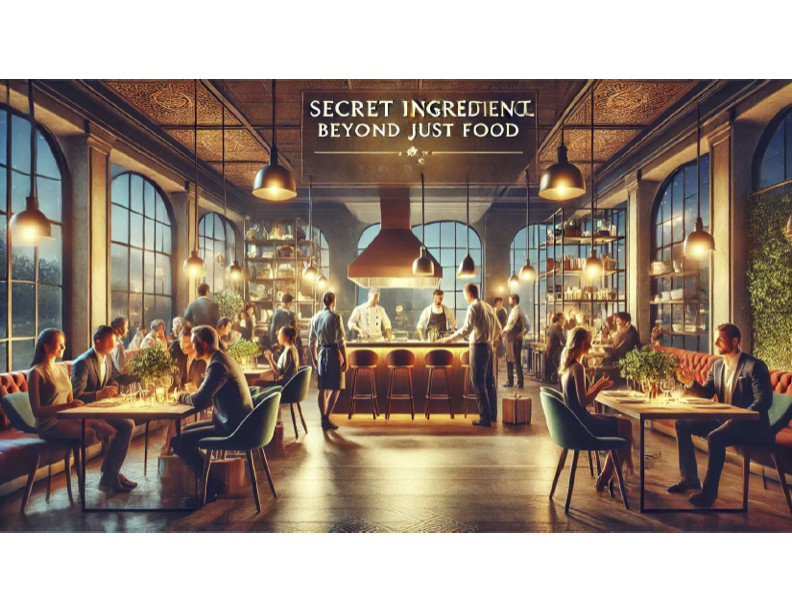Opening and running a restaurant is a dream for many, but the reality is far from easy. The industry is fiercely competitive, with a significant percentage of new restaurants closing within their first few years. While having great food is essential, it’s not the only factor that determines success. If you’re planning to start a restaurant—or struggling to make yours thrive—you need to focus on the most important thing for a successful restaurant: an exceptional customer experience.
Why Customer Experience is King
The restaurant industry is not just about serving meals; it’s about creating memorable experiences for diners. Customers may forgive an average dish, but they won’t return if the service is poor, the atmosphere is uncomfortable, or they don’t feel valued. A great experience keeps people coming back, builds loyalty, and turns customers into your best marketing tool—through word of mouth and online reviews.
Here’s how you can master customer experience and set your restaurant apart from the competition.
1. Outstanding Service: Make Every Guest Feel Special
Service is the heart of the dining experience. Even if you serve the best food in town, a rude or inattentive staff can ruin the meal for a guest. To ensure outstanding service:
- Train your staff to be friendly, knowledgeable, and attentive.
- Encourage them to personalize the experience by remembering regular customers and their preferences.
- Be responsive to special requests and dietary restrictions.
- Make sure service is fast but not rushed, and that customers never feel ignored.
Great service makes diners feel valued, leading to positive reviews and repeat visits.
2. Ambiance: Set the Right Mood
People don’t just come to a restaurant to eat—they come for the experience. The ambiance plays a huge role in making them feel comfortable and happy. Key elements include:
- Lighting: Soft, warm lighting creates a welcoming atmosphere, while bright lighting works well in casual, fast-paced environments.
- Music: The right music at the right volume enhances the mood without overpowering conversations.
- Cleanliness: A clean dining area, spotless restrooms, and a well-maintained kitchen are non-negotiable.
- Seating and Layout: Comfortable chairs, well-spaced tables, and a logical flow contribute to a positive experience.
If your restaurant’s ambiance doesn’t align with your target audience, you may struggle to attract and retain customers.
3. Consistency: Keep Customers Coming Back
A great first impression is essential, but consistency keeps people returning. Customers should always receive the same level of quality in food, service, and ambiance. To maintain consistency:
- Standardize recipes and food preparation techniques.
- Implement regular staff training to ensure uniform service.
- Have a quality control system in place to monitor food and service standards.
People return to places where they know what to expect. If your restaurant delivers a different experience each time, customers won’t take the risk of coming back.
4. A Strong Online Presence: Your Digital Front Door
In today’s digital age, your restaurant’s online presence is just as important as its physical space. Potential customers will check your website, read reviews, and scroll through your social media before deciding to visit. Here’s how to maximize your online presence:
- Keep your website updated with menus, pricing, hours, and contact details.
- Encourage satisfied customers to leave positive reviews on Google, Yelp, and TripAdvisor.
- Engage with customers on social media—respond to comments, post behind-the-scenes content, and promote special offers.
- Offer online reservations and delivery options to make it easier for customers to choose your restaurant.
A strong online reputation attracts new diners and reassures existing ones that they’re making the right choice.
5. A Menu That Balances Quality, Variety, and Profitability
Your menu should be exciting, well-priced, and easy to navigate. Some key considerations:
- Offer a manageable number of dishes—too many choices can overwhelm customers and slow down service.
- Use high-quality ingredients while keeping food costs under control.
- Include a mix of familiar and unique dishes to appeal to a broad audience.
- Regularly update the menu based on seasonal ingredients and customer preferences.
An effective menu enhances the dining experience and ensures profitability without compromising quality.
6. Engaging with the Local Community
A restaurant that feels like part of the community will always have an edge. Get involved by:
- Hosting events, such as live music nights, chef’s table experiences, or wine tastings.
- Partnering with local businesses and farmers to source ingredients and cross-promote.
- Supporting local charities or participating in community events.
When customers see that your restaurant cares about the community, they’re more likely to support you in return.
Conclusion
The most successful restaurants don’t just serve great food—they create an unforgettable customer experience. By focusing on outstanding service, ambiance, consistency, online presence, a strong menu, and community engagement, you can build a restaurant that not only survives but thrives in a competitive industry.
Food will always be important, but how you make people feel will determine whether they return. And in the end, a loyal customer base is the real recipe for success.
Are you ready to elevate your restaurant’s experience? Let us know your thoughts in the comments!

